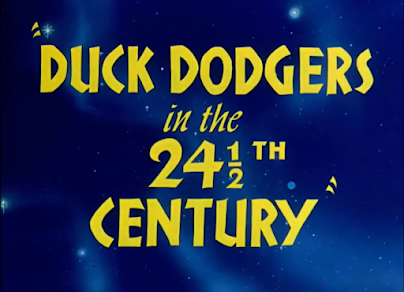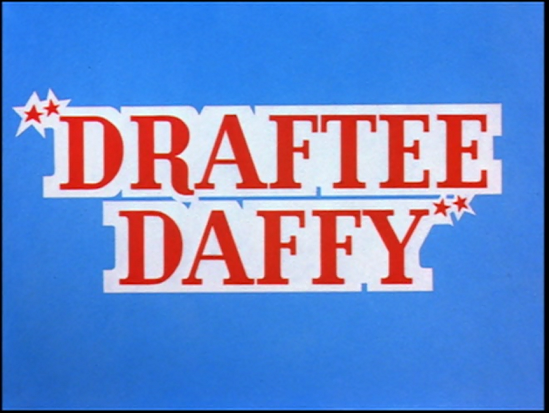Cartoon comedy: "Duck Dodgers in the 24 1/2th Century"

Cartoon violence doesn't need to be "mindless." Sometimes it can be skilfully integrated with witty wordplay and creative jokes about fictional technology. Director Chuck Jones and writer/story artist Michael Maltese demonstrate this in their classic cartoon Duck Dodgers in the 24½th Century (Warner Bros., 1953). In this cartoon, Daffy (as Duck Dodgers) and Marvin are rival claimants, on behalf of Earth and Mars respectively, for Planet X and its precious resources (Illudium Phosdex, the "shaving cream atom", if you're curious). Marvin has Daffy at ray-gun point with an "A-1 Disintegrating Pistol" (A-1 is evidently the Martian counterpart of Acme), but Daffy isn't bothered, as he's wearing a "disintegration-proof vest". This is a funny "technology" gag in itself: the idea of a futuristic version of a present-day item (a bullet-proof vest), and the idea that you could protect yourself from disintegration the same way yo





